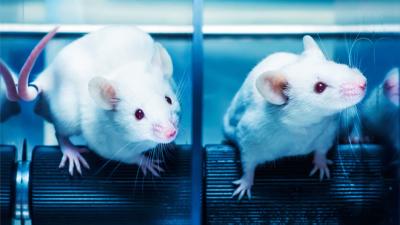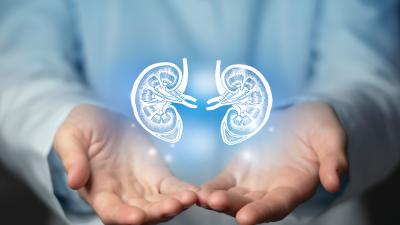World Aquatic Animal Day

The list of aquatic animal species used in medical research and testing is long—too long: frogs, newts, salamanders, and toads; dolphins, manatees, sea lions, and seals; alligators, lizards, snakes, and turtles; snails, shrimp, sponges, and sea urchins; eels, marlins, seahorses, and zebrafish, to name a few.
Monday, April 3, is World Aquatic Animal Day, an annual day dedicated to aquatic animals and raising global awareness about these often-forgotten nonhuman animals. Aquatic animals are some of the most fascinating animals on Earth and they play critical roles in their ecosystems, but they are used and abused for human consumption and entertainment in a multitude of ways that threaten their existence and sometimes even our own. Today and every day, the Physicians Committee honors aquatic animals by working to replace their use in research and testing with more effective, more reliable, and more humane nonanimal methods.
Cephalopods
Cephalopods are a class of aquatic animals including squids, octopuses, cuttlefish, and nautiluses. They are delicate creatures, requiring highly specialized care in captive environments to avoid distress, disease, and death. They are also highly intelligent, with complex nervous systems, unique behavioral repertoires, and capacity for pain. Because they are invertebrates, meaning they don’t have a backbone, cephalopods are excluded from the U.S. policy that regulates the care and use of laboratory animals. This means that researchers can experiment on them and treat them in any way, including painful and deadly ways, with no avenue for accountability.
Despite these facts, cephalopods are used in a variety of federally funded research contexts to study topics like developmental biology, bacterial colonization, and neuroscience. Although it is hard to imagine how research using cephalopods could translate to improved human health outcomes, there are even efforts funded by the National Institutes of Health (NIH) to turn these animals into “model organisms”—species bred solely to be supplied at multiple life stages and subsequently experimented on extensively, much like rats and mice are used.
In the short term, the Physicians Committee is working urgently to close the gap that allows researchers to experiment on cephalopods without any federally mandated oversight. Ultimately, invasive research using cephalopods should be replaced with nonanimal, human-specific approaches or noninvasive wildlife research.
In 2020, the Physicians Committee and a coalition of scientists and public interest groups, led by the Harvard Law School Animal Law & Policy Clinic, sent a petition to the NIH asking for the establishment of federal research protections for cephalopods. As we approach three years since then, the agency has yet to take action.
In November 2022, we ramped up our efforts. Thanks to leadership by Rep. Seth Moulton, Sen. Cory Booker, and Sen. Sheldon Whitehouse, both the House and Senate took action to address this gap in welfare policies by sending letters to the NIH reiterating the requests in our original petition. As this next session of Congress is underway, we are continuing to work with lawmakers to get these important changes made.
Horseshoe crabs
Horseshoe crabs live in marine and brackish water. You may have seen them on the beaches of the Atlantic East Coast of the U.S. These animals are a crucial part of their ecosystems, but habitat loss paired with overharvesting for medical use have begun to cause concern for this animal’s future. Their populations are declining, and they are currently listed as a “vulnerable” species, meaning they are vulnerable to extinction.
There is a default safety test for all injectable therapies and vaccines that uses the blood of horseshoe crabs, which is not only harmful to the animals as it requires a needle to the heart that drains a large portion of their blood, but it also introduces the risk of supply disruption since an entire industry is depending on the blood of a wild animal.
Fortunately, there is a scalable, synthetic, nonanimal test called recombinant factor C (rFC) that has been shown to be scientifically superior than the test that uses horseshoe crab blood. Currently, regulatory policies in the U.S. make it more burdensome to use rFC, but the Physicians Committee is working directly with Congress, industry, and regulatory agencies to ensure that, in time, all batches of injectable drugs and vaccines are tested using nonanimal methods, without horseshoe crab blood.
Live fish
The Organization for Economic Cooperation and Development, or OECD, is a global advisory body that, among other activities, sets international chemical testing guidelines. These guidelines are used throughout the world to assess chemical safety. Physicians Committee staff lead animal protection activities at the OECD, which includes integrating nonanimal approaches into international testing guidelines. In 2021, three of the four new guidelines adopted were nonanimal methods.
One of these new guidelines describes the use of a cell line derived from rainbow trout to identify ecological hazards to fish and other wildlife. In February, as a part of the Physicians Committee’s DyNAMic Discussions continuing education program for regulatory toxicologists, attendees learned about how to use this fish cell line to predict toxicity in wildlife and replace traditional live fish tests.
Other aquatic animals
About half of the NIH budget goes toward research that uses animals. Due to a lack of agency transparency, it’s impossible to know how much of that goes toward aquatic animals. Regardless, the Physicians Committee is working hard to shift away from this paradigm that relies so heavily on animals.
In December, thanks to mounting pressure from the Physicians Committee and other animal advocates, the NIH established a working group to figure out how to increase their investment in nonanimal methods. This is a huge step in the right direction for an agency that has for decades been reliant on animals, aquatic and otherwise. With extra funds for nonanimal methods, researchers can take advantage of improved infrastructure and training for valuable experimental platforms like tissue chips, and the scientific community can make real progress in shifting away from animals, benefitting the animals and patients alike.







